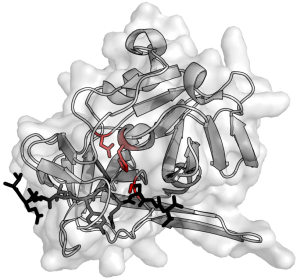Science Daily has reported that two new methods of attacking troublesome protease “ClpP”, associated with the troublesome and resistant Staphylococcus aureus and Mycobacterium tuberculosis, have been discovered. Some of us may already know about staph infections and tuberculosis, so let’s rewind for a second and talk about exactly what these “proteases” are.
For starters, proteases are a kind of protein. As with all other proteins, proteases are comprised of chains of amino acids, and integral to cellular process and function. As explained by Science Daily, proteases take it one step further, and act as “scissors”. The protease’s “scissors” cut other proteins, shortening or lengthening their amino acid chains. This cutting action allows the protein to execute a variety of functions. These functions run the cellular gamut from decomposition to proper positioning.
Staphylococcus aureus and Mycobacterium tuberculosis are characterized by the special protease known as “ClpP”. Scientists can identify this protease, but they have had some difficulty disabling them. Convention dictates an attack on the “cutting edge” of the scissor-like proteins. But ClpP responds in a deceptive manner. At first, it looks like the antibiotic works. The “cutting edge” shuts down- but just for a few hours. Then, it activates again. Because Staphylococcus aureus and Mycobacterium tuberculosis are unyielding to many antibiotics, the fact that there now exist two ways to attack these proteases is major breakthrough.

Science Daily reports that the head chair of biochemistry at the Technical University at Munich, Michael Groll, discovered two new methods of attacking the troublesome protease. Groll is joined by two doctoral candidates, Malte Gersch and Roman Kolb, and the discovery seems promising. But what exactly are these new processes? The first is a way of scrambling the amino acids’ order. The ensuing disorder splits the protease into two separate parts. The second approach focuses on the active center, the cutting edge of the “scissors”. The attack on the center transforms the amino acid chain in charge of the cutting into something different. Without the cutting action, the proteins cannot be properly activated.
These two discoveries are important, but the team of scientists uncovered even more. They discovered inhibitors that reveal how these two new approaches are initialized. The scientists plan to take their discoveries and test them on live bacterial strains. They aim to allow the human immune system to fight only a few of the pathogens, with the new methods preventing newer resistances from being formed.